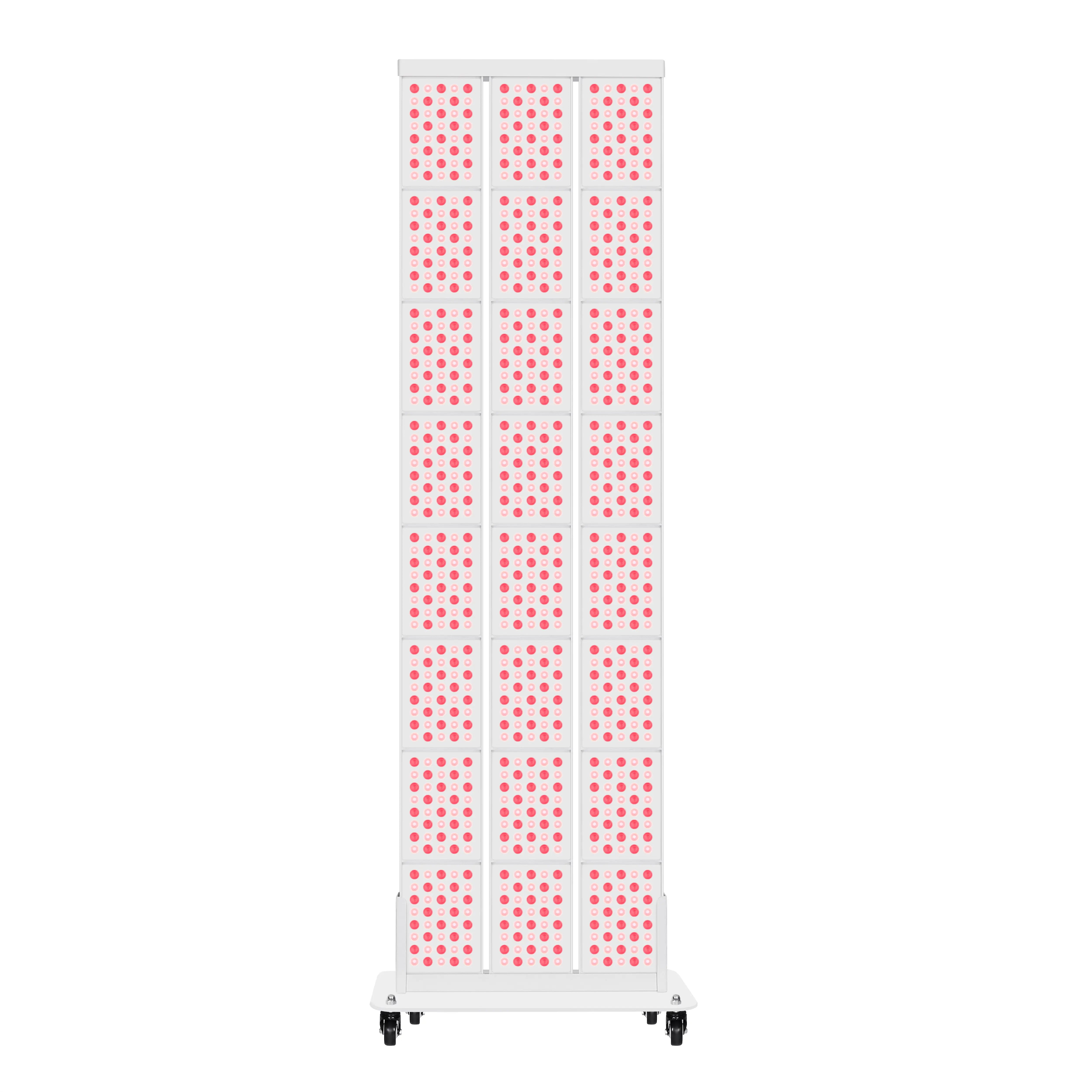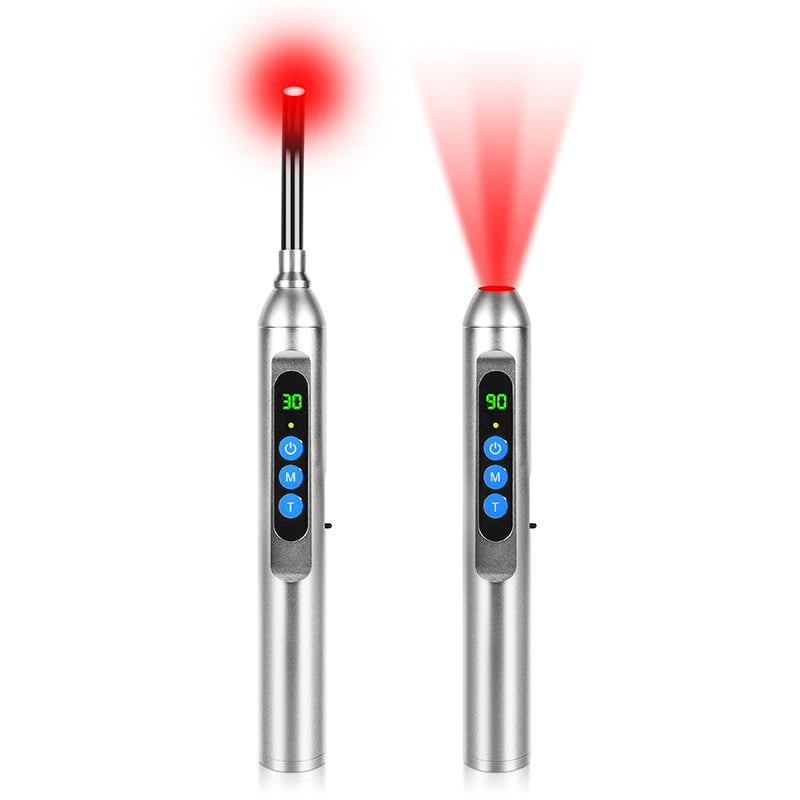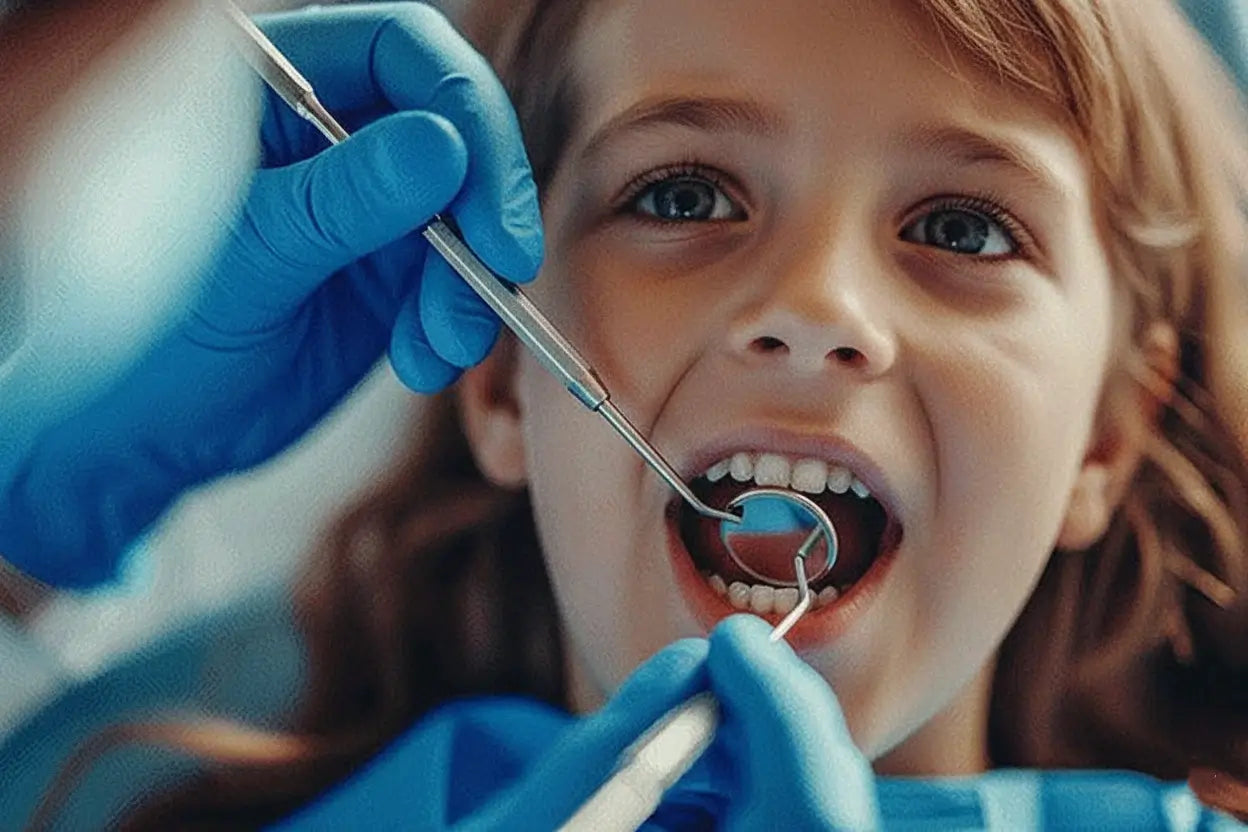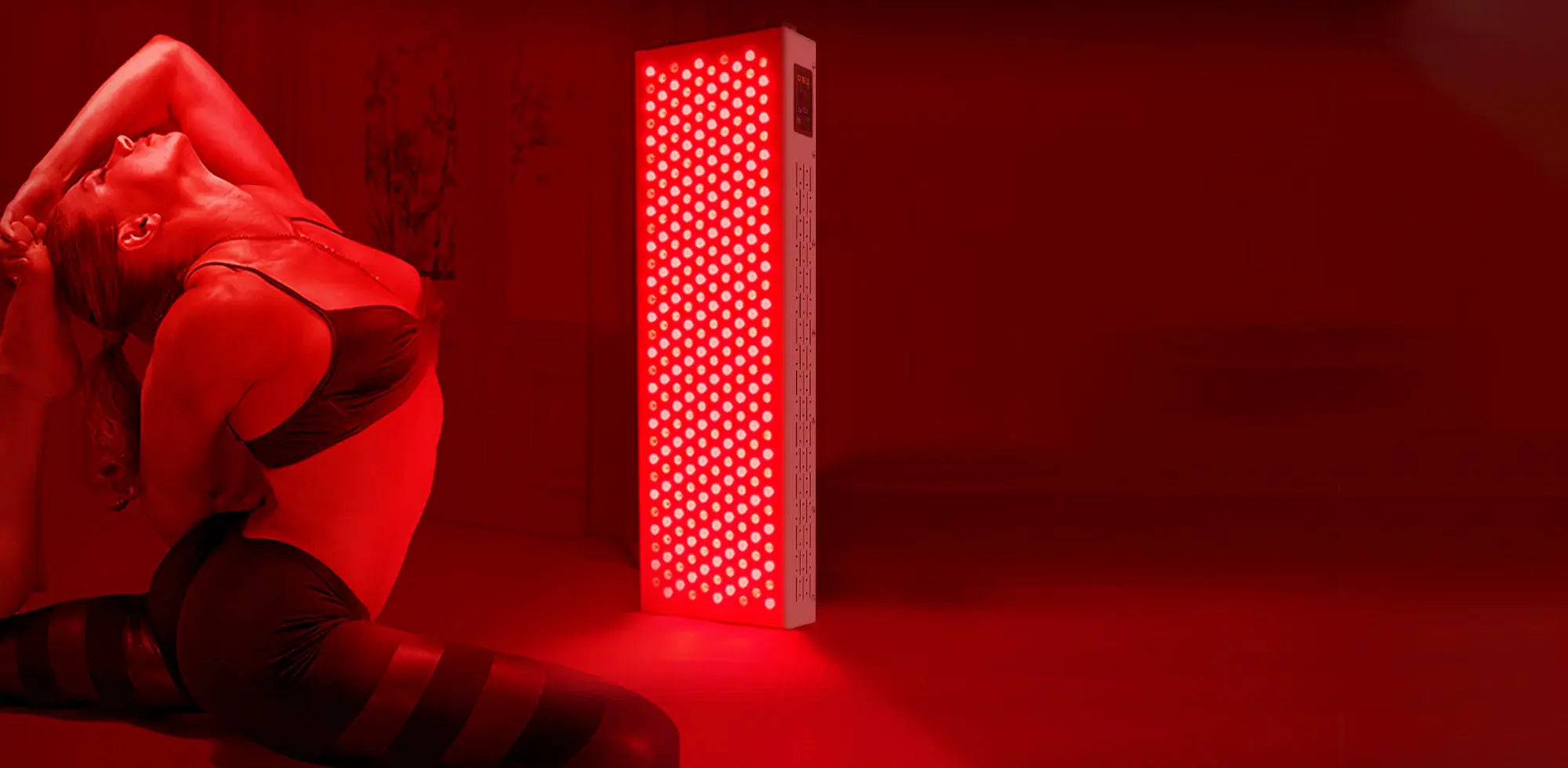I. Introduction
RLT comes down to utilizing the low-level light waves of the red light to boost the level of cellular activity. Non-invasive nature of this treatment has given it further recognition and wide popularity because it has been found to facilitate tissue repair, reduce inflammation and relieve pain. The function of RLT in the context of post-surgical recovery can be broadly put forth by saying that it is an additional therapy which facilitates healing and of course leads to better outcomes.
Regarding RLT commencement after surgery, it is essential to consider the procedure type and the patient's timeline of recovery. Usually, RLT is generally well-tolerated, as long as it is initiated within the first few days of surgery, when initial healing starts.
Nonetheless, consulting healthcare professionals is of great significance in deciding upon the accurate period of operation and makes a guarantee of safety, including wound closure and any special post-operative measures. Being a kind yet robust approach, YouLumiStore RLT products can be regarded as a very valid choice for the recovery after surgery, because the body's self-recovery capabilities can be harnessed by the method.
The Healing Process Post-Surgery
After surgery, your body embarks on a wonderful restoration voyage that is completely with your body. This process can be broadly divided into three distinct phases:
1. Immediate Recovery (First 24-72 Hours):
This tedious phase is aimed for arresting bleeding and to implant antibiotics. The blood vessels absorb fluid, causing the blood to clot. White blood cells rush to the entry point in an attempt to fight any possible intruder. The period may be marked by swelling, soreness, and fatigue.
2. Sub-acute Phase (3 Days to 3 Weeks):
At first, the inflammation becomes dominate but then the body shifts to repair mode Fibroblasts, these being very specialized phylogeny, supply the matrix that is made up of collagen, a protein that forms the matrix for the "scaffold". Vessel size which is coordinated across the body and inflammation/healing at the wound would increase, leading to improved oxygen and nutrient supply of the area. You may find yourself suffering a persistent stiffness and mild discomfort in the initial stage but it is expected for pain to gradually abate.
3. Rehabilitation Phase (3 Weeks to Several Months):
This phase is longer, and mainly focuses on strengthening and movement workouts. Immature collagen fibers progressively strengthen and their organization ensues till they mature into a cohesive tissue. The major task of the physical therapy is to make the patient able enough to move around and restore the mobility and the range of motion. This phase should not be rushed. Therefore, it should be treated as a long process as the body tries to return to the state it was before the operation.
General Guidelines for RLT After Surgery
Red Light Therapy (RLT) can be beneficial after surgery, but timing and approach should align with medical guidance:
- Consider RLT only following initiation of wound healing, typically within 1–7 days after a surgical operation. In such circumstances, preventing or inhibiting a patient’s formation of scars is a perfect goal.
- Begin moderately at the shorter sessions and low-intensity surroundings, after that add up as much as tolerated.
- Take note of any unsuppressed symptoms or unease and alter the therapy in the appropriate manner.
Influence of Surgery Type:
The type and extent of surgery play a significant role in determining when RLT can be safely introduced:
- Minimal surgeries that can take place immediately after the procedure can be the cases of short dermatological or orthopedic ones. Usually, they let us to apply laser right after the surgery.
- After a big surgery (e.g., abdominal, joints), the healing process may be lengthy, therefore RLT should be started only after the completion of this phase, which usually occurs during the recovery process.
Medical Advice and Guidelines:
It's essential to consult with healthcare providers before starting RLT after surgery:It's essential to consult with healthcare providers before starting RLT after surgery:
- Secure a good deal that there won't be any chances of infection or will be a big complication.
- Implement exact recommendations to wound treatment and after surgery care.
- Review any issues that could hinder the effectiveness of resting lid treatment, such as medical problems.
Through addressing medical recommendations and getting aware of surgery type and its implications in recovery time, patients can gain the maximum in the post-operative rehabilitation benefits from RLT. Always give the first priority to your safety and seek advice from the doctors and healthcare professionals in conjunction with individualized guide.
Factors Affecting Safe Use After Surgery
While red light therapy (RLT) holds promise for post-surgical recovery, several factors influence its safe and effective use:
- Surgical Procedure Type:The extent of surgery represents a vital element. Most recently, surgeons achieved the greatest success using the tinier incisions in minimally invasive procedures which helped in their fast application of RLT in comparison with the major surgeries, leaving to the extensive tissue disruption. Like some surgeries, the revitalization of the tissues is more intricate, and there is a strong possibility that RLT before the completion of such healing process would interfere with the optimal tissue formation.
- Wound Healing Status:What we need to take into cognizance is the condition of the wound. RLT shall not be employed on wounds open or gaping that have not fully licked their time. To preserve the wound of the existing infection, the red light may facilitate bacteria propagation. It's recommended for someone to wait until the incision is all the way closed and shows signs like a regular tissue development.
- Presence of Inflammation or Swelling:RLT could lower inflammation markedly; nevertheless, its use at those initial stages of inflammatory response could be ineffective. Recruitment of inflammatory cells and mediators is the most important part which will either accelerate or delay healing process and RLT could possibly hinder the process of healing. Put off the RLT procedure until inflammation reaches a plateau and visit a doctor in case if RLT is an option.
- Underlying Medical Conditions:Although medical conditions can be safe under RLT, they are (and must be) handled after surgery. Persons, for whom this therapy may be ineffective, such as individuals with suppressed cellular immunity, photosensitivity or any other skin conditions should consult their doctor first.
- Medications:Certain medicine, while catalyzing the creation of more sun reactants, will likely not work alongside RLT. It is of equal importance that you confess all of your medications to the one who is making your reason before RLT post-surgery.
Benefits of Red Light Therapy after Surgery
Light therapy (RLT) has recently proved to be a powerful anesthetic agent in manipulation of post-surgical therapy. By bathing tissues in concentrated red and near-infrared light, RLT offers a range of potential benefits:
- Faster Healing:Although the exact mechanism is not yet fully clear, RLT is supposed to involve cell regulation and restoration of balance between catabolism and anabolism, or a reversal of tissues breakdown and rebuilding. It could help you to fix a open wound earlier and shorter curing period which means your life routine would be get back to sooner period.
- Reduced Pain and Inflammation:Although it could be difficult sometimes to hold a good attitude post-surgery, with RLT, the possible pain and swellings may be reduced. Through wearing away of pro-inflammatory factors, RLT may be positive contribution to easing a healing period.
- Improved Scarring:The exciting thing about RLT is that it can promote healthy tissue formation, which if it has the same effect on scars as well can be of significance. Research reports show it reduces the length a scar and creates an even smoother texture.
- Enhanced Tissue Regeneration:Other than wound healing, RLT could have potential in the promotion of general tissue regeneration. Write an introduction about the need for personal finance education for students and highlight the importance of money management skills in achieving financial stability. This may be of great importance, in particular, for operations such as cutting or nerve fixing.
- Non-invasive and Painless:Instead of the treatment that others have, RLT is a process that is not an invasive and painless procedure. This is a casual technique of letting red light over the target spot such that it becomes the best non-invasive option for most patients.
- Unlocking the Potential of RLT:Discover red light therapy apparatuses offer by YouLumiStore perfect for at-home use and advanced in quality. Make an appointment with your doctor so he/she can prescribe RLT if it is right for you for promoting healing and check at YouLumiStore to choose a red light therapy device that would suit your needs to aid your healing.
Practical Tips for Using Red Light Therapy at Home
While the green light for red light therapy after surgery comes from your doctor, here are some tips to optimize your at-home RLT experience:
- Device Selection:There is a red light therapy field already developed with various devices for home use at YouLumiStore. Search for instruments that cover this range below certain wavelength of 630nm and above of 850nm red light therapy, the area known as therapeutic range for wound healing. Size and shape are key – large red light panel are great for generosity to the whole body, while hand devices may be more exact. Use a device with settings adjustable according to your doctor's prescription - meaning the intensity and time of your treatment can be customized.
- Safety First:It is crucial to wear the protective eyewear, otherwise called red light therapy (RLT) glasses, at all times to be at safety. They usually operate in the same principle: they just filter out the detrimental wavelengths, leaving the beneficial radiations to reach the skin. Proper device placement is critical, so always follow manufacturer's instruction, also please do not exceed the distances from the treatment area as mentioned on it.
- RLT Routine:Consistency is the key to success, just follow this through! Try class selections determined by your physician normally 15-20 mins. Get the proper distance from the device as it was indicated by your practicing doctor and the device instruction.
- Listen to Your Body: Furthermore, RLT is occasionally known to cause the same effects in some patients, but usually in the form that is insignificant. If you feel any pain, interrupt your use and ask your physician about it.
- Progress Over Perfection:It is common to beg for instant gratification, however, you must still be patient regarding the results you will notice. Red light is known for efficiency on a cellular level. The most common effects on wound healing and pain are discovered after several weeks. Patiently, faithfully, and enjoy the predictable results as RLT be a great complimentary tool in your way back to normal activity.
Case Studies and Research
- Patient:A 25-years old woman player was performed cruciate ligament Anterior reconstruction (ACL) surgery to restore the damaged ligament in her knee. ACL reconstruction is a widespread orthopedic surgical procedure, which is patient-oriented and aimed at regaining stability and function of the knee.
- Intervention:The patient made use of RLT after surgery and physiotherapy, and she had a gradually increase on the therapy too. She resorted to the use of a diode type laser-assisted therapy (RLT) with the wavelengths of 660 nm, which she applied for twenty minutes every day, first to the incision site and then to the surrounding areas for a total of six weeks.
- Outcome:The patient described a remarkable improvement of pain and stiffness since the implementation of RLT on her post-surgery recovery timeline comparing to the situation when she hadn't done the RLT the previous time following a surgery. Besides, she stretched her knee to full extent rhythmically and it brought more or less muscle pain down during her physiotherapy sessions. Moreover, 3 months after the surgery the patient was allowed for activities like fishing or hiking, the time typically needed for recovery following ACL reconstruction was exceeded.
Reference: https://pubmed.ncbi.nlm.nih.gov/35616040/
Final Words
RLT proves that it is an effective ancillary treatment of post-operative period. In this article, we've discussed the advantages of RLT in advancing wound healing, controlling pain, reducing inflammation, and better outcomes. I would like to stress that RLT is meant to be used after surgery under medical supervision as the health and effectiveness of this method depends on it.
Before including RLT in your post-surgical care, you should discuss it with a healthcare professional and make sure that a particular timing and approach will fit your condition and recovery process.
Through synergism of RLT with traditional approaches, patients are able to capitalize on their healing process and experience better outcomes. RLT provides a good alternative for optimizing recovery after surgery in addition to the standard treatments as its therapeutic effects are gentle and highly effective.











